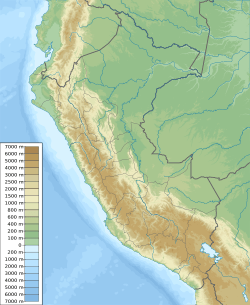Matapalo Island facts for kids
|
Isla Matapalo (Spanish)
|
|
|---|---|
| Geography | |
| Location | Pacific Ocean |
| Coordinates | 3°26′7.34″S 80°15′27.45″W / 3.4353722°S 80.2576250°W |
| Area | 6.08 km2 (2.35 sq mi) |
| Administration | |
| Region | Tumbes |
| Additional information | |
| Time zone |
|
Matapalo Island is a cool island located in the Tumbes area of Peru, right in the Pacific Ocean. It's separated from the mainland by a narrow stretch of water, like a small river, that is about 198 to 273 meters wide. This makes Matapalo Island the largest Peruvian island in the Gulf of Guayaquil, covering an area of 6.08 square kilometers.
Exploring Matapalo Island
Matapalo Island is a unique place because of its interesting geography and the different types of plants that grow there. It's a great example of how different environments can exist close to each other.
Island Geography and Size
Matapalo Island is quite big for a Peruvian island in this area. Its total size is 6.08 square kilometers. Imagine an island that's about 608 soccer fields put together! The narrow water channel that separates it from the mainland runs from east to west. This channel is not very wide, making the island feel close to the main landmass.
Amazing Plants and Habitats
The island is home to several types of plant life, creating different habitats for animals. These include:
- Mangrove forests: These are special trees and shrubs that grow in salty water, often along coastlines. They have unique roots that help them breathe and survive in muddy, wet conditions. Mangroves are super important because they protect coastlines from erosion and provide a safe home for many fish, crabs, and birds.
- Dry tropical forests: These forests are found in warm areas that have both a wet season and a long dry season. The trees here often lose their leaves during the dry period to save water. They are full of diverse plant and animal life that have adapted to these changing conditions.
- Grasslands: These are open areas mostly covered by grasses. They can be found between forests or along the coast. Grasslands provide food and shelter for many animals, especially those that graze.
These different plant types show how diverse the environment on Matapalo Island is, even though it's not a huge place.
See also
 In Spanish: Isla Matapalo para niños
In Spanish: Isla Matapalo para niños


